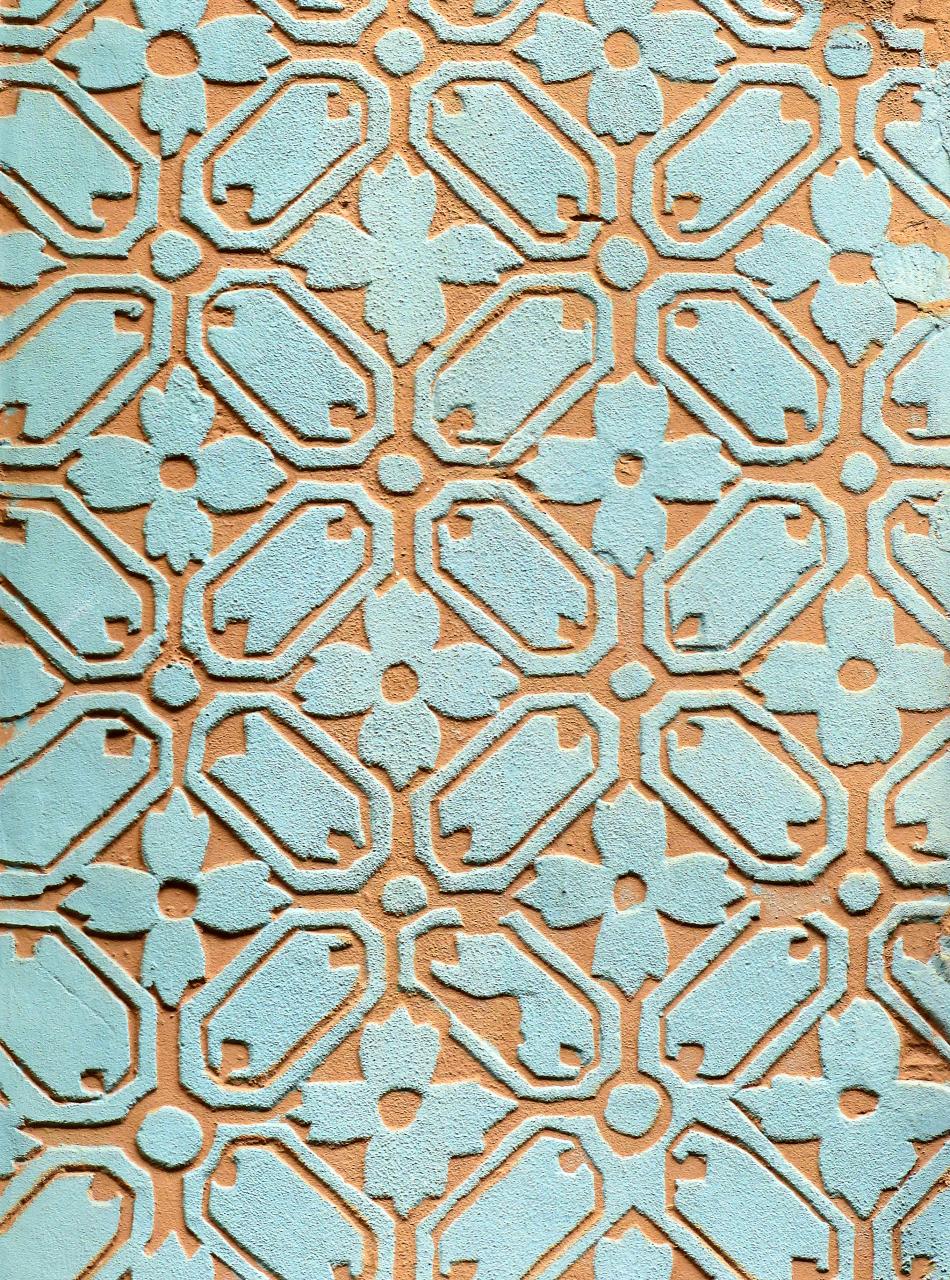#1296. Turquoise and Terracotta Moorish-Style Relief Facade
The image showcases a fragment of decorative cladding in the Moorish style, executed as a relief ornament. We see a characteristic example of Islamic geometric pattern, where turquoise elements stand out clearly against a terracotta background. This type of finishing is commonly found in the architecture of North Africa, the Middle East, and southern Spain (especially in the Andalusia region).
The ornament forms a complex geometric grid, where octagonal elements with curved sides alternate with four-petaled floral motifs. The surface texture has a granular character, which enhances the tactile perception of this facade element. The depth of the relief creates an expressive play of light and shadow, adding dynamism to the entire composition.
The execution technique resembles traditional zellige or similar types of Islamic mosaic, although here we see more of a plaster relief rather than ceramic tiles. Such decorative solutions are often used in the design of inner courtyards, prayer halls of mosques, or walls of palace complexes, such as the Alhambra in Granada.
